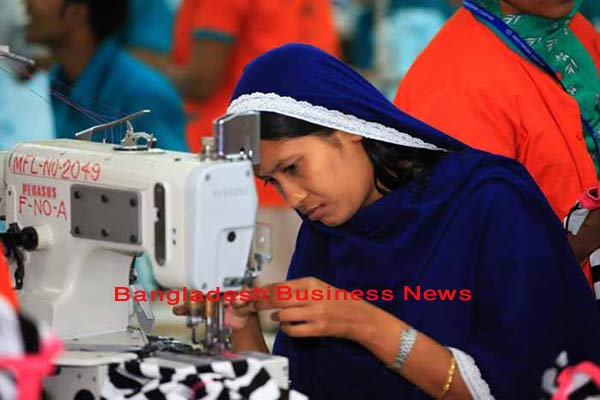
New York, US (BBN)-To date six million people have viewed the video on a 2 Euro t-shirt social experiment released two years after the devastating collapse of Rana Plaza in Bangladesh.
A number of household brands have contributed $21.5m to the fund set up to give compensation to victims and their families, reports The Huffingtonpost.
Earlier this year millions of people participated in "Fashion Revolution" Day seeking more transparency and traceability in the global apparel industry.
But it is our own insatiable appetite for inexpensive clothing, coupled with lax government regulation which encourages retailers and brands to turn to low-income countries for low-cost labour?
I believe that the global apparel industry can lead change. If companies know how and where their products are made, they can take the steps needed to create fair and safe conditions for workers worldwide, writes Leslie Johnston, Executive Director of C & A Foundation.
With their purchasing power, they can become a force for good.
A FEW FACTS ON THE APPAREL INDUSTRY REVEAL AN ALARMING PICTURE:
Workers in the garment industry earn some of the lowest wages in the world. For example, the monthly minimum wage for unskilled garment workers in Sri Lanka and Bangladesh is around EUR 70; while Cambodia and Pakistan it is around EUR 106, significantly less than the lowest relevant minimum wage in China (approximately EUR 156) or the lowest average minimum wage within the European Union (Bulgaria, EUR 187).
In such countries, garment production is often the first formal employment for rural men and women. Especially for women, who make up about 80 per cent of the workforce, the apparel industry offers a chance to step out of abject rural poverty; but this is not without significant risk to their health and even their lives. The Supplier Ethical Data Exchange (SEDEX) recently indicated that 52 per cent of the issues raised in their global audits over the past two years were related to health and safety.
Yet apparel powers the economies of many countries. In Bangladesh, it accounts for 79 per cent of their total exports, in Cambodia 52 per cent, and in Sri Lanka 43 per cent. What incentives, then, do countries have to change the status quo?
The challenge is that the current actors - governments, business, civil society, and customers - don't yet feel the urgency to change. There have been some notable industry-wide initiatives, such as the Accord on Fire and Building Safety in Bangladesh and the Alliance for Bangladesh Worker Safety, which have been able to vastly improve the fire and building safety in Bangladesh. However, as long as the fashion industry continues to depend on opaque supply chains, overall working conditions will not change.
This is where transparency and traceability come in. With information comes accountability. We see this already with the example of the ILO's Better Factories programme in Cambodia, where an online transparency database is resulting in swifter responses by factories to compliance issues. We are inspired by the many smaller brands enabling full traceability back to the farmer in the field via QR codes. And we applaud the efforts of the non-governmental organisation, Verite, who is helping companies to better understand how to create positive benefits for workers across their supply chains - starting with transparency.
C&A Foundation is contributing to this effort by funding many initiatives that have the potential to drive change through greater transparency. Through our partnerships with both LaborVoices and Labor Link, we are working to empower workers to give direct feedback on working conditions.
We're collaborating with the Sustainable Apparel Coalition, which represents over 40 per cent of the apparel industry, to strengthen the tools which help companies better measure and therefore, manage their sustainability activities. Together with MADE-BY and the Responsible Sourcing Network, we're exploring market-driven initiative to ensure that cotton in the supply chain was not harvested with forced labour.
We're also launching an effort - with six other brands and sustainability partners - to create more transparency and traceability in the organic cotton sector.
But this is a monumental task. It requires a monumental, collaborative effort. Each and every stakeholder - brands, retailers, NGOs, donors, governments, international organisations - has a significant role to play. Together they hold the power to transform the lives and livelihoods of the millions who're touched by the industry.
And we must not forget who holds the most power in this equation.
Every time we, as customers, make a purchase decision, we are also making a production decision.
BBN/SK/AD